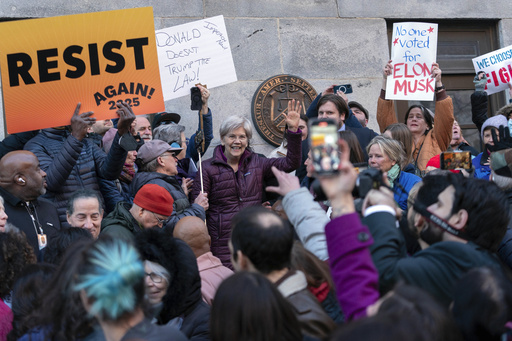In a significant turn of events far from the bustling halls of Washington, a federal employee in the Pacific Northwest is weighing the possibility of resigning from their position due to a controversial incentive orchestrated by notable billionaire Elon Musk, who serves as an influential adviser to President Trump. Fed up with questions of loyalty and job security, this worker, who requested anonymity for fear of potential repercussions, is tempted by an offer of several months’ salary upon resignation, as she considers relocating overseas. However, doubts linger: could this offer be a ploy to identify individuals deemed disloyal to the administration?
This case epitomizes the anxiety permeating the federal workforce, the largest employer in the nation, which boasts over two million diverse employees, from analysts to scientists. A looming deadline—11:59 p.m. EST on Thursday—adds to the stress, prompting workers to contemplate whether they should accept the package put forth by the administration.
The Trump administration, in its drive for a government overhaul, has been pushing federal workers to consider this deal as part of an ambitious strategy aimed at dismantling the so-called “deep state” that critics allege obstructed the president’s agenda during his first term. Government officials tout the resignation program as a financial relief plan for taxpayers, presenting it as “a valuable, once-in-a-lifetime opportunity” while allowing employees to collect their paychecks until September 30, should they choose to resign.
On the eve of the deadline, the administration intensified its messaging to federal employees regarding possible layoffs or furloughs. A communication from the Office of Personnel Management warned of anticipated downsizing across various agencies, suggesting a restructuring that would require remaining employees to demonstrate unwavering loyalty. Those who opt to stay may also face heightened scrutiny concerning their conduct and suitability for federal service.
Democratic lawmakers and labor unions, however, have voiced concerns regarding the legality of this resignation package, arguing that it lacks Congressional authorization and potentially exposes workers to the risk of not receiving promised payments. Unions have initiated legal action to halt these plans, with a hearing scheduled to assess whether the financial offer should be blocked. One union leader described the initiative as more of a scam than a legitimate buyout, advising employees against participation.
Amid the rising caution, insiders from various agencies have highlighted their skepticism regarding the motivations behind the program, with some mentioning troubling clauses that could limit employees’ rights to pursue legal recourse in case of the government’s failure to comply. The effectiveness of this offers has sparked debate, aggravated by the reduced trust in the administration’s intentions.
With an eye on restructuring the federal landscape, Musk, appointed to lead the redesign of federal efficiency, has been at the forefront of this initiative. His directive echoes a previous message he sent to employees during his takeover of Twitter, symbolizing a decisive moment for the workers to choose their future paths.
As the deadline looms, administration officials have hosted Q&A sessions to clarify doubts. They acknowledge that there are numerous uncertainties and stress pervading the workforce but assert that the initiative is genuine and part of plans for robust civil service reform in D.C.
Despite assurances, anxiety remains widespread among federal employees who doubt the government’s authority to disburse such funds. This skepticism is fueled by historical instances suggesting Trump might be reluctant to honor financial commitments. Protests have emerged outside federal buildings, reflecting the unrest within the ranks of government workers.
Amidst these tensions, individuals working within government express concerns over the present job security, fearing for both their livelihoods and the integrity of federal services. These workers argue that while reductions may be necessary, there is a fine line between downsizing and endangering the very fabric of vital services that citizens rely on.
Comments from various employees illustrate a mix of apprehension and resistance. Some have found themselves reconsidering the offer as social media discourse highlighted the potentially unrealistic aspects of the deal. Still, others recognized that regardless of the outcomes, the administration’s intent and methods have succeeded in causing significant disruption within the federal workforce. Employees remark on the daily upheavals and express that the atmosphere of uncertainty is palpable, prompting a re-evaluation of their commitment to their roles in government.




